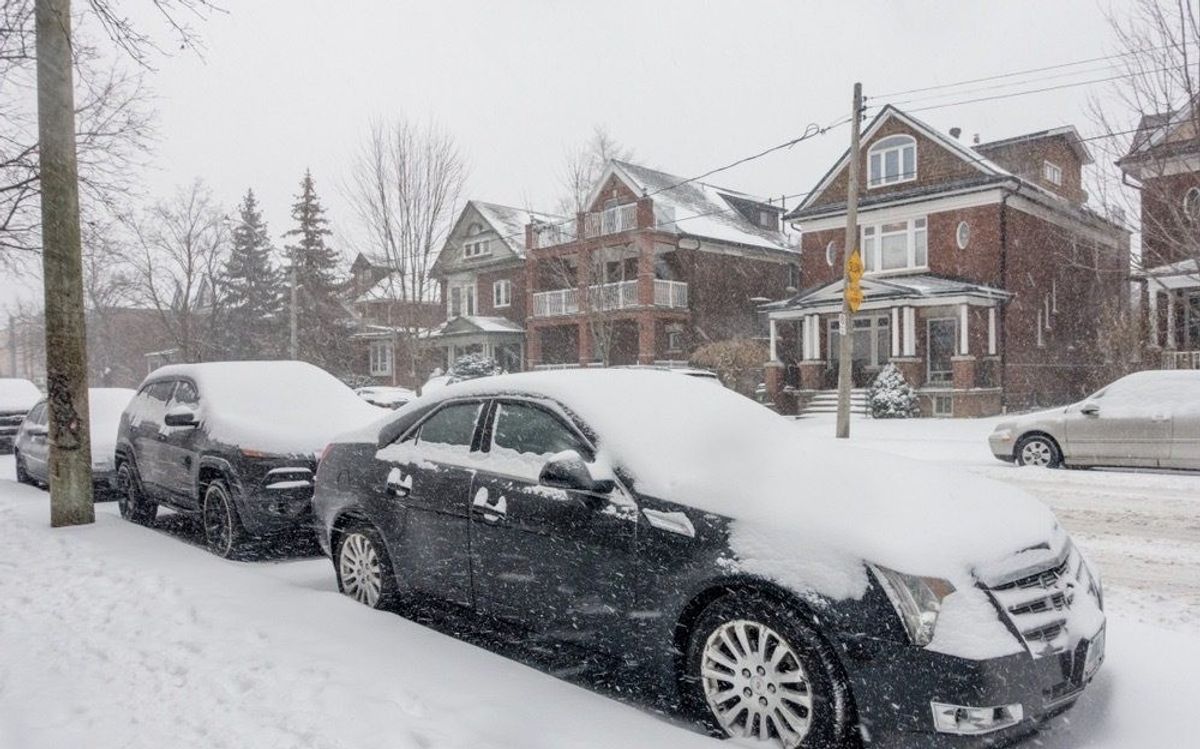The rollercoaster of a year that was 2020 concluded with more rental properties sitting empty in Canada, particularly in the Greater Toronto Area (GTA), where the vacancy rate hit a 14-year high.
Canada Mortgage and Housing Corporation says the overall vacancy rate for all bedroom types increased from 2% in 2019 to 3.2% in 2020, while the national average two-bedroom rent across Canada's Census Metropolitan Areas (CMAs) increased by 3.6% to $1,165.
The federal housing agency released its Rental Market Survey (RMS) on Thursday, which revealed there were increases in rents and arrears across the country and indicators showed that tenants were reluctant to move and that there is a challenge in finding affordable rental housing.
"The vacancy rate for purpose-built rental apartments in Canada's CMAs increased in 2020," said Bob Dugan, CMHC's chief economist.
"The economic impact of the pandemic has significantly reduced rental demand. Lower international migration, fewer student renters, and weaker employment conditions led to weaker inflows of new renters. While vacancy rates increased in many centres, we continue to see a need for more rental supply to ensure access to affordable housing," said Dugan.
READ: Average 1-Bedroom Rent in Toronto Has Dropped Over 20% Year-Over-Year
The vacancy rates for Canada’s three largest metropolitan areas, Toronto, Montréal and Vancouver, rose to 3.4%, 2.7% and 2.6, respectively, as these cities were faced with higher supply and lower demand amid the pandemic.
Here in Toronto, the vacancy rate increased due to the economic fallout brought on by COVID-19, which led to the average vacancy rate in the GTA reaching a 14-year high. Job losses felt in the service and hospitality sectors also contributed to the rise in vacancies, as these industries tend to pay lower wages and employ younger workers -- which are key characteristics of typical renter households.
Throughout the province, vacancy rates increased in Thunder Bay (4.1%), Ottawa (3.9%), Windsor(3.6%), London (3.4%), Kingston (3.2%), St. Catharines-Niagara (2.7%), Peterborough (2.6%), and Greater Sudbury (2.5%).
However, vacancy rates decreased in Hamilton (3.5%) and Barrie (2.1%), while in Belleville (3.0%), Brantford (2.2%), and Guelph (2.2%), vacancy rates remained stable. No changes occurred in Kitchener-Cambridge-Waterloo (2.1%) and Oshawa (2.3%).
Nationally, rental prices crept up in 2020, with the average two-bedroom rent across cities with more than 10,000 people rising 3.6% to reach $1,165.
The average two-bedroom apartment rent was highest in Vancouver, Toronto, Ottawa, and Victoria, where rents were $1,792, $1,653, and $1,517, respectively.
“The Toronto rental market has definitely been hit harder than the resale market. The rental sector is down by 16.5%. And inventory is 2.5 times greater than it was in December 2019,” Robert Van Rhijn, a broker at Strata.ca, told Toronto Storeys.
“The average rental cost-per-square foot has also come down this past year. Right now it's $3.00. In December 2019, it was $3.50.”
Van Rhijn said pre-pandemic, he was seeing rentals getting pretty much what landlords were asking for. But now, rentals have been leasing at 2% below the listing price.
He noted there's also a correlation between Toronto’s regular rental market and what’s happening with short-term rentals, like Airbnb, though Van Rhijn says enforcement hasn’t been great for short-term rentals, and he believes the city needs to be more aggressive.
"As lockdown measures lift, more people will be looking to rent in the city again. That’s why these short-term units need to be put back into the regular rental pool — to help with overall inventory growth,” said Van Rhijn.
The report also looked at rent arrears for the first time and found that 32.5% of apartment owners reported their arrears rate to have remained similar to 2019, 58.3% said it was higher, and almost 10% found it was lower.
The Toronto CMA recorded the highest share of rent arrears (0.92%) in Canada, with 10.68% of all units (34,858) reporting arrears, which represented $55 million in total rent in arrears.
"The pandemic disproportionately affected lower-paid workers in the hospitality and service sectors. These numbers are reflective of a larger share of population in Toronto relative to the rest of Canada, with a greater concentration of workers in these industries," CMHC said.





















